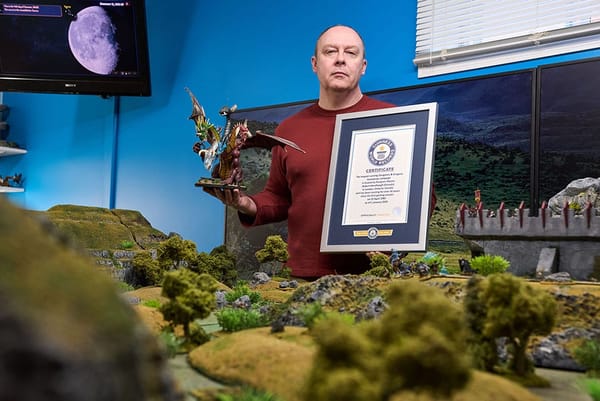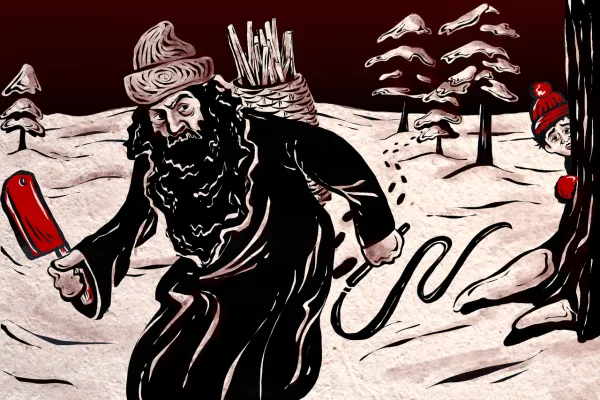During World War II Japan used kamikaze submarines

From Veterans Breakfast Club: "You’ve heard of Japanese Kamikazes in World War II, but probably not Kaiten, the underseas version of the famous suicide attacks on Navy warships in 1944-1945. Kaiten was a top-secret manned torpedo program where the Japanese pilots would be sealed into explosive-packed steel cylinders and launched against enemy ships. The Japanese started planning suicide submarine missions in the summer of 1944, even before they began training Kamikaze pilots. By then, the Japanese had lost all hope for victory. They had suffered defeat in battle after battle, on land, at sea, in the air. Their best pilots were dead. Their fleet was decimated. In the end, Kaiten proved to be a disaster-within-a-disaster, a foolhardy experiment within a misguided war. More Kaiten pilots and crew members died in training and on missions than the number of sailors they managed to kill on the American side."
Cars in movies are missing something obvious but you may not have noticed

From Now I Know: "The picture above comes from the 2016 movie La La Land, which didn’t win Best Picture at the Academy Awards. But the Best Picture Oscar isn’t the only thing missing from La La Land. If you look carefully, you might see it — or, more accurately not see it, because it isn’t there. Look behind Mia Dolan (played by Emma Stone), and you’ll not see it. What you will see is a clear shot of a car passing her through the back seat window. That’s because of what’s not there: her headrest. If you’re making a movie, the odds of a car crash are very, very low — so the headrest serves no safety purpose but leads to a lot of small problems when it comes to filmmaking. First, directors want a picturesque background behind their actors, and if you have someone in the back seat, you often want to be able to see them. Also removing the headrest makes filming easier — it gives the cast and crew more room to maneuver in the car."
Research shows that swallowing swords is a lot less dangerous than you might think

From the BMJ: "Sword swallowers know their occupation is dangerous. The Sword Swallowers' Association International recognises those who can swallow a non-retractable, solid steel blade at least two centimetres wide and 38 centimetres long. As we found only two English language case reports of injury resulting from sword swallowing, we explored the technique and side effects of this unusual practice. Of the 46 survey respondents 19 described sore throats, usually when they were learning to swallow, after performing too frequently, or when they were swallowing multiple or odd shaped swords. Lower chest pain, often lasting days, followed some performances and was usually treated by abstaining from practice. They rarely sought medical advice. Only six suffered perforation of the pharynx or oesophagus. No members of the association had died from sword swallowing, but the cost of medical care after a perforation was a concern with three members receiving medical bills around $23 000-$70 000."
Hi everyone! Mathew Ingram here. I am able to continue writing this newsletter in part because of your financial help and support, which you can do either through my Patreon or by upgrading your subscription to a monthly contribution. I enjoy gathering all of these links and sharing them with you, but it does take time, and your support makes it possible for me to do that. I also write a weekly newsletter of technology analysis called The Torment Nexus.
At the turn of the century people were worried that travelling too fast wasn't good for you

From Derek Thompson: "Transportation technology remade the west in a few short decades between the 1880s and 1910. A bicycle craze swept America in the 1890s. The Wright Brothers took flight in 1903. The first Model Ts rolled off Ford’s production lines in 1908. In Europe, cars quickly transformed the physical environment. The number of automobiles in France increased from about 3,000 in 1900 to 100,000 by 1914. That year, Ford's factory in Detroit produced and sold more than 300,000 Model Ts. Cultural critics of the early 1900s were confident that it was unnatural for people to move so quickly — women, in particular. A woman on a bicycle was a thing to be feared. She signified a high-velocity freedom that was often associated with moral and sexual deviancy. Moralists condemned women who “pedaled along gleefully, having discarded their corsets and put on more practical clothing, including trousers.” Critics and novelists considered this new technological speed to be a vice."
In South Africa spitting chunks of antelope poop is a popular sport

From Wikipedia: "Kudu dung-spitting is a sport practiced by the Afrikaner community in South Africa. In the competition small, hard pellets of dung from the kudu antelope are spat, with the farthest distance reached being the winner. Kudu dung-spitting is popular enough to have an annual world championship competition, with the formal sport beginning in 1994. Contests are held at some community bazaars, game festivals or tourism shows. Unlike many similar sports, the distance is measured from the marker to the place the dung pellet comes to rest, rather than where it initially hit the ground. The world record in the sport is a distance of 15.56 metres (51.0 ft) set as of 2006 by Shaun van Rensburg. It is said that hunters began using the pellets in spitting competitions to "retaliate" at their prey, as the kudu is a notoriously difficult animal to hunt, and infamous for leaving a trail of dung while managing to elude the hunter."
The Danxia trail is not for the faint of heart

Acknowledgements: I find a lot of these links myself, but I also get some from other newsletters that I rely on as "serendipity engines," such as The Morning News from Rosecrans Baldwin and Andrew Womack, Jodi Ettenberg's Curious About Everything, Dan Lewis's Now I Know, Robert Cottrell and Caroline Crampton's The Browser, Clive Thompson's Linkfest, Noah Brier and Colin Nagy's Why Is This Interesting, Maria Popova's The Marginalian, Sheehan Quirke AKA The Cultural Tutor, the Smithsonian magazine, and JSTOR Daily. If you come across something interesting that you think should be included here, please feel free to email me at mathew @ mathewingram dot com



